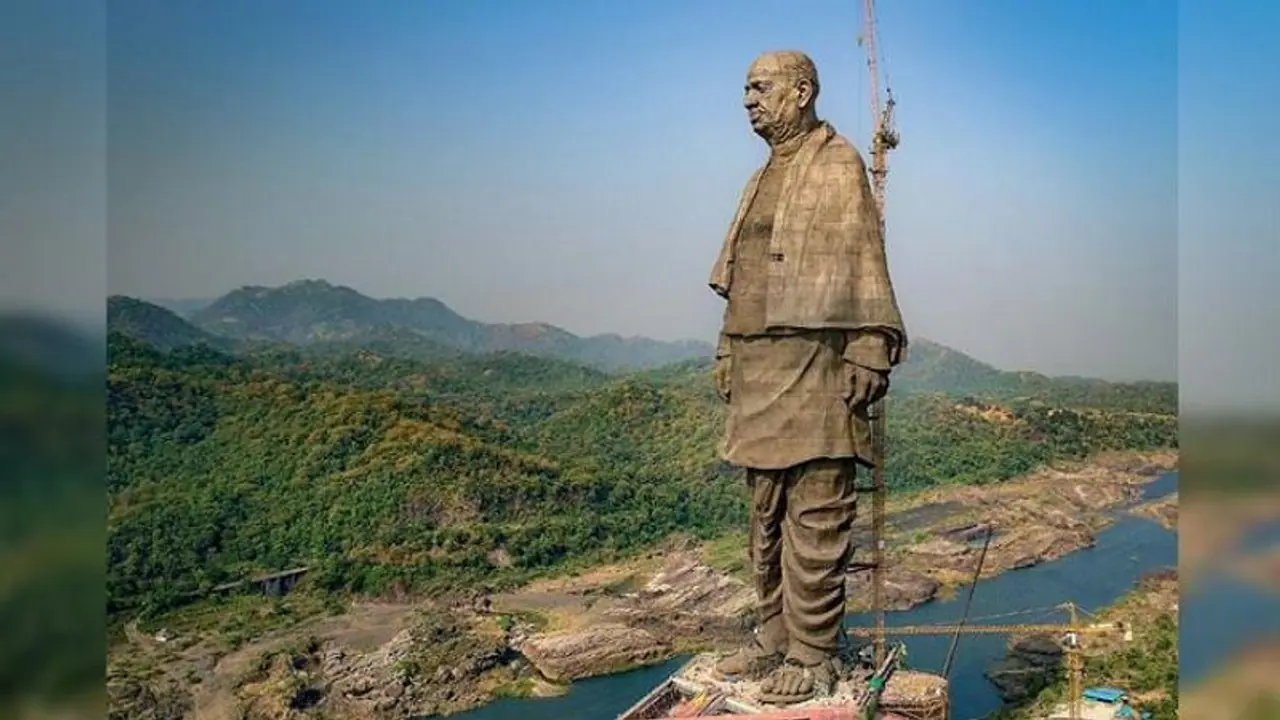It has been repeatedly said that Jawaharlal Nehru was Congress’s choice and was unanimously elected on merit. However, many historians and documents talk about a completely different scene
New Delhi: The Iron Man of India Sardar Vallabhbhai Patel, whose 182-metre-tall statue was erected on the banks of the Narmada in Gujarat, has been credited with uniting the nation by Prime Minister Narendra Modi. Many historians feel that India political journey would have been different had Patel led the first government.
It has been repeatedly said that Jawaharlal Nehru was Congress’s choice and was unanimously elected on merit. However, many historians and documents talk about a completely different scene.
Also read:PM Modi inaugurates 'The Statue of Unity' in honour of Sardar Patel
The official history has always downplayed the contribution of the Iron Man of India in uniting the country which became the Union of India.
The official history doesn’t mention that Patel emerged as the popular choice. Historians say that the Congress looked at Patel as the most deserving candidate to be sworn in as independent India’s first prime minister, given his proven track record of being an able administrator and a no-nonsense politician.
Congress just before independence
> India’s independence was on the cards post Second World War. British rulers had started thinking in terms of transferring power to the Indians.
> Maulana Azad was the Congress president in April 1946. As the news about independence was doing the rounds, the election for the post of the Congress president was announced.
> According to Azad’s autobiography, India wins freedom, Mahatma Gandhi on April 20, 1946, made his choice known in the favour of Nehru. Despite Gandhiji’s open support for Nehru, the whole party wanted Patel as the president and subsequently the first prime minister of India, because Patel was considered “a great executive, organiser and leader”.
> As the last date of filing nominations arrived, 12 out of 15 Congress committees nominated Patel. The remaining three Congress committees did not nominate anybody’s name. Obviously, the overwhelming majority was in favour of Patel.
> At this point, Gandhiji faced a major challenge of getting members in favour of Nehru. He knew none in the Pradesh Congress Committee would vote for Nehru. He instructed Acharya JB Kriplani to get some proposers for Nehru from the Congress Working Committee (CWC) members.
> Kripalani convinced a few CWC members to propose Nehru’s name for party presidentship. But it was not enough. He reportedly told Nehru about the scenario.
> Nehru was defiant and made it clear that he will not play second fiddle to anybody.
> Gandhiji at once asked Patel to withdraw his nomination. Patel, out of respect for Gandhiji, withdrew his nomination. And it paved the way for the coronation of Nehru as India’s first prime minister.
> The development didn’t go well with other Congress leaders. Rajendra Prasad wrote that on hearing Patel’s withdrawal of nomination, he was disappointed and remarked that Gandhiji had once again sacrificed his trusted lieutenant in favour of the ‘glamorous Nehru’.
> Historians say Gandhiji had a soft corner for Nehru for his modern outlook. In comparison to Nehru, Patel was a little orthodox. At least twice, Gandhiji took a decision in Nehru’s favour, once in 1929 and in 1937.
> Gandhiji had often and in different platforms called for making Nehru the PM.
> Some analysts have said that Nehru had threatened to split the party, but Gandhiji wanted both Nehru and Patel to provide leadership to the country. He used his veto power in favour of Nehru because he feared Nehru could cause problems.
> Just like Prasad, C Rajgopalachary, who blamed Patel for depriving him of the first presidentship of independent India, wrote: “Undoubtedly it would have been better if Nehru had been asked to be the foreign minister and Patel made the prime minister. I too fell into the error of believing that Jawaharlal was the more enlightened person of the two... A myth had grown about Patel that he would be harsh towards Muslims. This was a wrong notion but it was the prevailing prejudice.”
